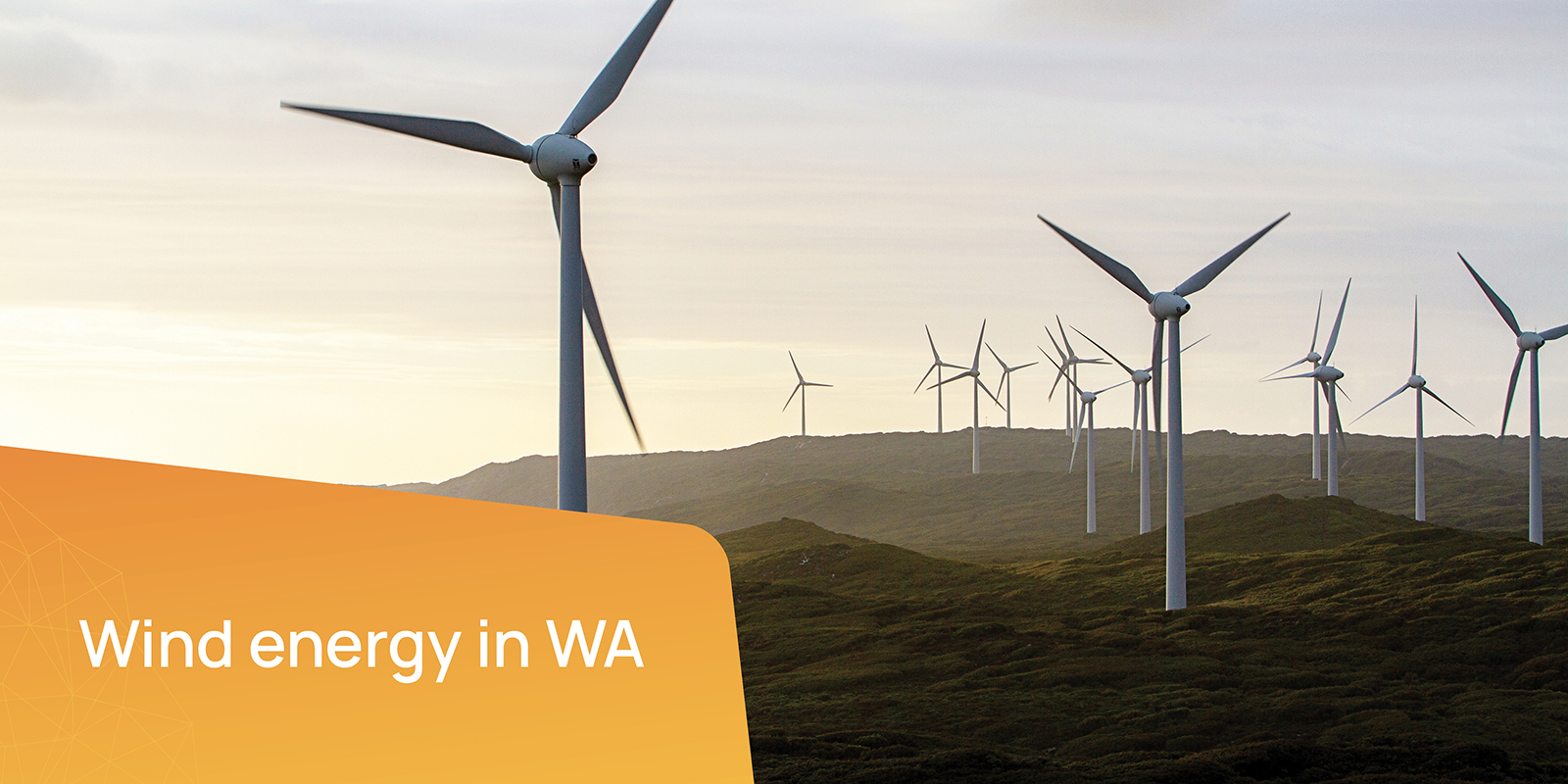The power of the wind
Wind generation involves capturing energy from the wind and converting it to electricity. As the wind rotates turbine blades, these move a generator which produces electricity. One wind turbine can produce enough electricity to power up to 2,000 average households every year.
Transmission lines then transport this electricity to where it is needed. Transmission networks can be considered a ‘super highway’ that carries electricity through towers and wires to homes, businesses, and communities in WA. Each megawatt of energy produced by a wind turbine equates to saving around two-thirds of a tonne of greenhouse gases.
A cost-effective, renewable energy source
Wind generation provides very low-emissions energy generation compared with coal and gas-powered generation. While fossil fuel prices and supply can fluctuate according to many factors, wind is always a free and readily available energy source.
Compared to solar energy, which can only be generated when the sun is shining, wind turbines can produce energy any time the wind is blowing, including overnight. Of course, wind does not blow all the time, so wind energy needs to be supported by other energy technologies, including solar and energy storage. Our energy system needs a balance of renewable energy sources to keep our electricity supply reliable and secure.
Wind energy in WA
- Western Australia has excellent wind resources, with widespread coastal areas, gentle hills and flat plains, along with the potential for offshore wind.
- In particular, the Southwest, Pilbara and Goldfield regions host world class wind resources.
- In the South West Interconnected System (SWIS), WA’s main grid, wind energy already accounts for around 16 per cent of the electricity generated on an average day.
- Unlocking the world class wind resources in the Goldfields and Pilbara will be an important part of WA’s energy transition.
The future of wind energy in WA
As our energy system transitions towards a cleaner energy future, wind energy has an increasingly important role as a renewable generation source. Demand for energy will continue to grow in both the SWIS and the North West Interconnected System (NWIS) in coming years. Wind and solar have been identified by the CSIRO as the most cost-effective renewable energy generation technologies and will be crucial to meeting this demand.
Given the scale of demand growth in Western Australia, there are significant opportunities for private proponents to develop wind farms and there are many projects being progressed across the state.
New wind projects, and other plans for new energy infrastructure, need to meet a range of requirements to ensure any community or environmental impacts are considered and minimised.
Frequently asked questions about wind energy
How tall are wind turbines?
While wind turbine design is largely a function of what global suppliers are both designing and manufacturing, typically, a wind turbine will be between 120 and 160 metres tall, with a blade length of up to 90 metres. This gives a maximum total height of 250 metres. The exact height of wind turbines is determined on a site-by-site basis.
How are potential wind farm locations chosen?
A range of factors are typically considered when choosing a suitable wind farm location, including: wind resource (average wind speed above 8 metres per second (m/s); the height of the ground; safety; impact on immediate and nearby land-use; environmental and cultural impact; and distance to the grid. A wind farm needs high winds throughout the year, so data is collected for at least one full year to test a site’s viability.
Are wind turbines noisy?
Improvements in design mean that wind turbines today are significantly quieter than those built 20 years ago. Although wind turbines do make a low-level noise, today’s generators are usually much quieter than most people expect. For example, it is possible to carry out a normal conversation at the base of a turbine running at maximum power, without raising your voice.
For more answers to frequently asked questions, download our brochure: Wind energy generation: Frequently asked questions









